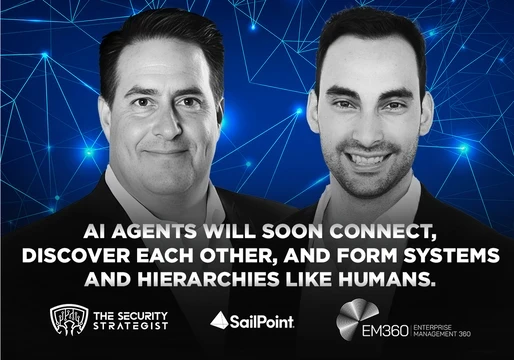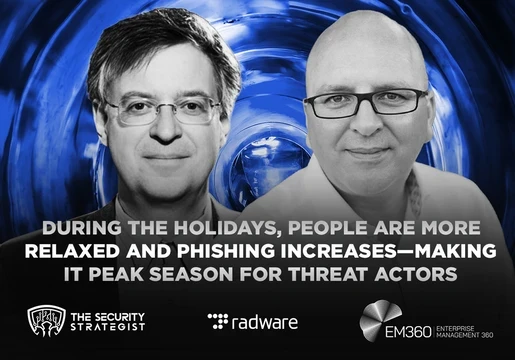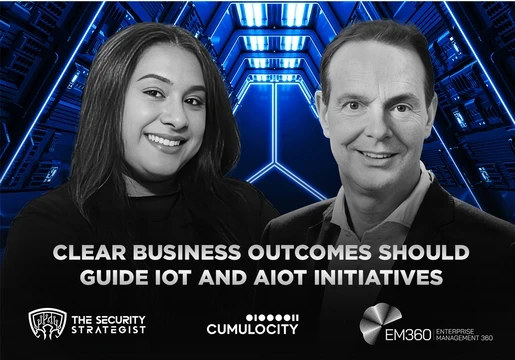The cybersecurity game has fundamentally shifted—and most organizations are still playing by outdated rules. Remember when we thought firewalls and network perimeters were enough? Those days are over. Attackers have discovered something far more valuable than breaking down digital walls: they're simply walking through the front door of your CI/CD pipeline.
I've spent the last decade watching this evolution unfold across dozens of organizations. The writing was on the wall after SolarWinds in 2020—eighteen thousand organizations compromised through a single supply chain vector. But did we learn? Apparently not. Codecov fell in 2021, exposing customer credentials for months before anyone noticed. Then CircleCI's breach in January 2023 forced every single customer to rotate their secrets overnight.
Sonatype's 2023 State of the Software Supply Chain report dropped a bombshell: supply chain attacks surged 742% in one year. Seven hundred and forty-two percent. Let that sink in.

Your Pipeline: The New Attack Vector
CI/CD systems weren't designed with security as a first-class citizen. They were built for one thing: speed. Ship fast, break things, worry about security later. Except "later" has a habit of never arriving.
Picture your typical deployment pipeline. Database passwords flow through it. API keys traverse multiple stages. Cloud access tokens get passed around like party favors. Container registry credentials move between systems. All of this sensitive data often lives in plain text configuration files that any developer with repository access can read.
Your pipeline doesn't just handle secrets—it IS a secret. With administrative access to production environments, it's essentially the master key to your entire infrastructure. It's like handing the keys to Fort Knox to someone you met at a coffee shop.
The dependency nightmare makes everything exponentially worse. Synopsys research reveals that modern applications contain an average of 528 open-source components. Each one represents a potential attack vector. Remember the left-pad incident? An 11-line JavaScript package that broke thousands of builds when its author unpublished it. Now imagine that same package contained malicious code instead of just disappearing.
Multi-tenant environments amplify these risks to terrifying levels. One compromised job can potentially access other customers' data, secrets, and infrastructure. I've witnessed this firsthand. It's not theoretical—it's inevitable.
Zero Trust: Beyond the Buzzword
Zero Trust has unfortunately become one of those terms that gets tossed around boardrooms without much substance behind it. But when properly applied to CI/CD pipelines, it's genuinely revolutionary.
John Kindervag at Forrester coined the term in 2010, though most implementations have focused narrowly on network security. Kindervag always emphasized that Zero Trust is fundamentally about assuming breach—not building better walls around your castle.
Traditional security models create what I call the "candy shell" approach—hard exterior, soft interior. Once you're inside the perimeter, you're implicitly trusted. Zero Trust flips this assumption entirely. It operates on the principle that threats exist everywhere—inside your network, outside your network, and especially within your trusted systems.
For CI/CD environments, this philosophical shift demands rethinking everything:
Jobs must prove their identity before accessing any resource
Credentials are never shared between jobs or pipeline stages
Permissions are granted for specific tasks, not blanket administrative access
Every action is logged, monitored, and analyzed in real-time
Context drives access decisions—who's requesting access, from where, when, and why
Implementation: Where Theory Meets Harsh Reality
Recently, I helped a fintech startup transform their CI/CD security posture. Their original setup was a textbook example of how not to do things—Jenkins running on shared servers, jobs executing with administrative privileges, secrets stored in plain text files scattered across repositories. Classic startup approach: ship features fast, address security debt later.
Identity and Access Management Revolution
We started with identity—the foundation of any Zero Trust implementation. Traditional CI/CD systems rely heavily on long-lived tokens stored as secrets. These tokens are shared across multiple jobs, nearly impossible to rotate safely, and create auditing nightmares.
OpenID Connect (OIDC) completely transforms this model. Instead of storing static cloud credentials, each job receives a short-lived token containing claims about its identity—which repository it originated from, what workflow is executing, even the specific commit hash being processed.
GitHub Actions introduced OIDC support in late 2021. AWS, Azure, and Google Cloud now all support federation. The token lifespan matches job execution time—typically minutes, not months. When the job completes, the token becomes worthless.
Artifact Signing and Provenance
Every artifact produced by your pipeline requires a cryptographic signature. This isn't optional anymore—it's fundamental for supply chain security.
The Supply Chain Levels for Software Artifacts (SLSA) framework provides a maturity roadmap. SLSA 1 covers basic documentation. SLSA 2 adds tamper resistance. SLSA 3 requires isolated builds and signed provenance. SLSA 4 represents the gold standard—hermetic builds with mandatory two-person reviews.
Most organizations should target SLSA 3, which mandates:
Signed provenance for every artifact
Isolated build environments
Dependency verification
Tamper-resistant audit logs
Sigstore makes this practical. Think Certificate Transparency for code signing—publicly verifiable, backed by the Linux Foundation, supported by major cloud providers. Best part? It's completely free.
Dependency Management Hell
Third-party dependencies represent the largest attack surface in most applications. The 3CX attack in 2023 demonstrated how sophisticated adversaries can compromise legitimate software vendors to distribute malware.
Dependency pinning is absolutely non-negotiable. Never use floating versions in production builds. The difference between lodash: ^4.17.0 and lodash: 4.17.21 could literally be the difference between a secure build and a compromised one.
But pinning alone isn't sufficient. You need comprehensive dependency scanning (Snyk, Dependabot, OWASP Dependency-Check), checksum verification, private registries for critical dependencies, and Software Bill of Materials (SBOM) generation for every build.
Network Isolation
Your build environment must be completely isolated from production networks. This seems obvious, yet I've encountered numerous organizations running CI/CD agents on the same networks as their production systems.
Ephemeral build environments are the solution. Spin up a fresh container or VM for each job, execute the build, capture the artifacts, then destroy everything. No persistence between builds, no contamination, no persistent backdoors.
Real-World Results
The fintech company I mentioned? After six months of implementation, they achieved an 85% reduction in security incidents. Audit preparation time dropped from weeks to days. Developer velocity actually increased because they spent less time troubleshooting permission issues.
But the journey wasn't smooth. Initial implementation required six months. Developers needed extensive training on new workflows. Some legacy applications required significant refactoring to support ephemeral credentials. The cultural transformation proved harder than the technical implementation.
Business Impact Beyond Risk Mitigation
Zero Trust CI/CD isn't merely about preventing breaches—it's about enabling sustainable business growth.
Regulatory compliance becomes dramatically simpler. SOC 2, ISO 27001, FedRAMP—they all mandate strong identity management and access controls. Zero Trust provides a framework that satisfies these requirements by design.
Customer trust increases measurably. Enterprise customers now routinely require security attestations before signing contracts. Having Zero Trust implemented provides a tangible competitive advantage in sales cycles.
Developer productivity improves counterintuitively. Eliminating security incidents and reducing manual security tasks actually accelerates development cycles. Developers can focus on building features instead of fighting security bureaucracy.
The Challenges Nobody Discusses
Zero Trust isn't a panacea. Implementation demands significant investment in tools, training, and cultural transformation.
Technical complexity increases dramatically. Managing multiple security tools, understanding cryptographic signing, troubleshooting OIDC authentication—these require specialized skills that many teams lack. Good luck finding developers who understand both Kubernetes orchestration and PKI infrastructure.
Performance overhead is measurable. Signature verification, dependency scanning, continuous monitoring—all of this adds latency to build processes. The overhead is usually minimal, but it's not zero. In high-frequency deployment environments, every second matters.
Legacy system integration is brutal. Older applications and infrastructure often don't support modern authentication mechanisms. You're looking at significant refactoring or complete replacement.
Future Trends
Several developments will shape the evolution of secure CI/CD:
Policy as Code is becoming standard practice. Tools like Open Policy Agent (OPA) enable version-controlling, testing, and deploying security policies alongside application code. Security becomes part of the development workflow, not an external constraint.
AI-powered threat detection will identify anomalous behavior in real-time. Machine learning models can detect unusual access patterns, suspicious dependency changes, abnormal build behaviors. This is already happening at companies like Netflix and Uber.
Hardware-based security will become more prevalent. Trusted Platform Modules (TPMs) and Hardware Security Modules (HSMs) provide cryptographic roots of trust that software alone cannot match. Apple's already implementing this with their M1 chips.
Supply chain transparency will be mandated by regulation. The EU's Cyber Resilience Act and similar legislation worldwide will require detailed supply chain documentation for software products. Compliance won't be optional.
Getting Started Without Breaking Everything
Don't attempt to implement everything simultaneously. Start with these practical steps:
Audit your current state ruthlessly. Document every long-lived credential, over-privileged access, and unmonitored system. The results will probably terrify you.
Implement OIDC authentication first. Start with cloud provider access—it's often the easiest win and provides immediate value.
Begin signing artifacts. Even basic GPG signing is better than no signing at all. You can upgrade to Sigstore later.
Segment your networks immediately. Isolate build environments from production systems. This should be your absolute first priority.
Monitor everything obsessively. You can't secure what you can't see. Start collecting logs before you worry about analyzing them.
The question isn't whether your organization should implement Zero Trust in CI/CD. The question is how quickly you can get started. Every day you delay is another day your software supply chain remains vulnerable to attack.
In my experience, organizations that wait for the "perfect" security solution never implement anything. The ones that start with imperfect solutions and iterate rapidly are the ones that actually improve their security posture.
Zero Trust in CI/CD isn't about preventing every possible attack—it's about making attacks exponentially harder and limiting the damage when they inevitably occur. In today's threat landscape, that's the best we can realistically hope for. And honestly? It's probably enough.







Comments ( 0 )